Top Choice
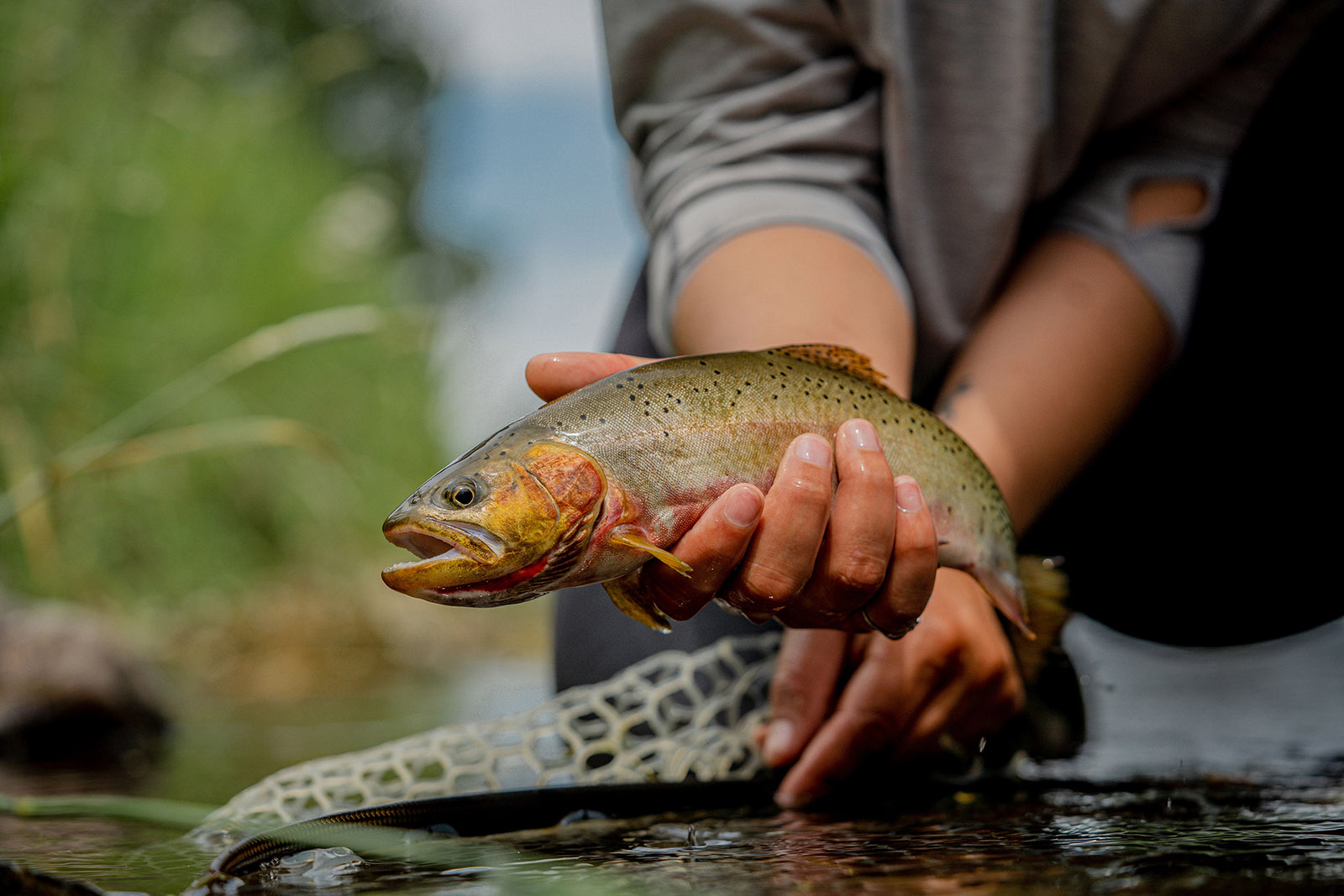
by Don Thomas
What makes the west slope cutthroat so special?
It’s mid-September on a remote mountain stream that shall go unnamed for reasons understood by all serious anglers. The ambience could not provide a starker contrast to my last experience fishing one of Montana’s better-known rivers. No driftboats, no congested launches, no crowds. In fact, no other anglers at all, save for my fourth-generation Montanan wife, Lori. Having been both a guide and visiting angler, I have nothing against other anglers. However, during my 70 years of life outdoors I’ve developed a deep appreciation of solitude, for which there can be no substitute.
Then, finally, a quick flash beneath the fly, a surface dimple that doesn’t belong there, and the Royal Wulff disappears. No shout of “Fish on!”, no screaming-reel clichés, just the tip of Lori’s made-in-Montana Winston 4-weight bouncing light as a feather.
Perched on a boulder overlooking the water, I watch Lori’s fly dance joyfully down the current. Nothing fancy here, just a Royal Wulff chosen for its buoyancy, visibility, durability, and nostalgia. Since most of the fish in this headwater stream have likely never seen a fly of any kind, these factors matter more than accurate imitation of any trout food. The fishing still requires technique, and Lori has been stripping and mending quickly to keep the fly drifting naturally as she works upstream toward the rocks at the head of the run.
Then, finally, a quick flash beneath the fly, a surface dimple that doesn’t belong there, and the Royal Wulff disappears. No shout of “Fish on!”, no screaming-reel clichés, just the tip of Lori’s made-in-Montana Winston 4-weight bouncing light as a feather. Moments later I’ve got my hemostat on the bend of the barbless #14 hook, and a quick flick of my wrist lets the fish return to being a wild native cutthroat trout.
“Naming the blackspotted cutthroat trout as Montana’s state fish is just another indication that the people of this state will settle for nothing but the very best in protecting the way of life we are all dedicated to preserving.”—Montana Chief of Fisheries Art Whitney, 1977
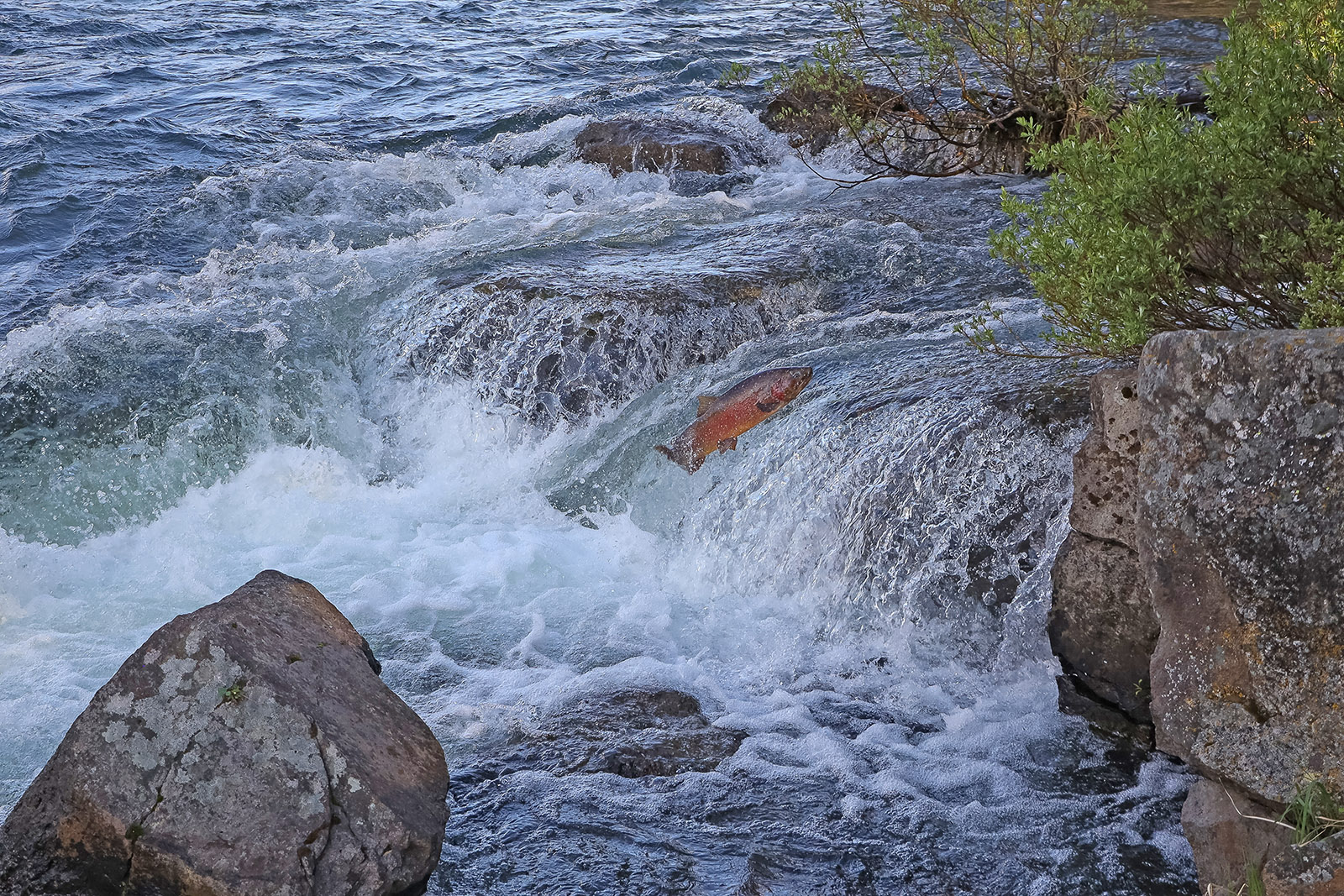
While I have a deep-rooted fascination with the natural history Lewis and Clark recorded in their journals, I avidly avoid crediting them with “discovering” anything, as Indigenous people were obviously aware of these species long before the explorers arrived. However, I still think it’s appropriate to acknowledge Meriwether Lewis as the author of the first written description of the cutthroat.
On June 13, 1805, while the expedition was camped near the Great Falls of the Missouri, Private Silas Goodrich, the expedition’s fishing fool, caught what Lewis described as “…a half a dozen very fine trout… from sixteen to twenty-three inches in length, precisely resembling our mountain or speckled trout [no doubt the eastern brook trout] in the form and position of their fins, but the specks are of a deep black instead of the red or gold color common in those of the U. States. These are generally furnished with… a small dash of red behind the ventral fins.” While Lewis got that “small dash of red” in the wrong place, it’s still a pretty good description of our cutthroat. Goodrich’s fish eventually became Oncorhynchus clarki in honor of Lewis’s co-captain.
Like all members of the genus Oncorhynchus—which includes the rainbow trout and Pacific salmon species—today’s cutthroats are derived from marine ancestors but developed a variety of adaptations due to their exceptionally wide inland distribution and habitat variety. Unsurprisingly, this led to the development of multiple subspecies divided by geography and habitat. While lumpers and splitters among fisheries biologists have disagreed about the number of subspecies for years, most now agree that there are between 12 and 14—three of which are listed as threatened and two of which are officially extinct.
While some differences among subspecies are obvious, others are less so. The coastal subspecies—which I became well acquainted with when I lived in Alaska—still returns regularly to the sea. In the Great Basin, the giant Lahontan cutthroat was commercially harvested to the brink of extinction—today it still survives in Nevada’s Pyramid Lake. Montana is home to two subspecies of cutthroat: the particularly lovely Yellowstone and the confusingly named westslope—also known as the blackspotted—which naturally occur well east of the Continental Divide.
My first encounter with cutthroats came when I was a little kid trolling a Woolly Worm (still an underrated pattern) behind a canoe as my father paddled around Yellowstone Lake. The fish was a fine specimen, perhaps 18 inches long. I was immediately struck by its appearance, especially after my father pointed out the namesake “small dash of red” on its lower jaw (not behind the ventral fin as Lewis incorrectly reported). The westslope subspecies may be less colorful overall, but it’s still a lovely fish.
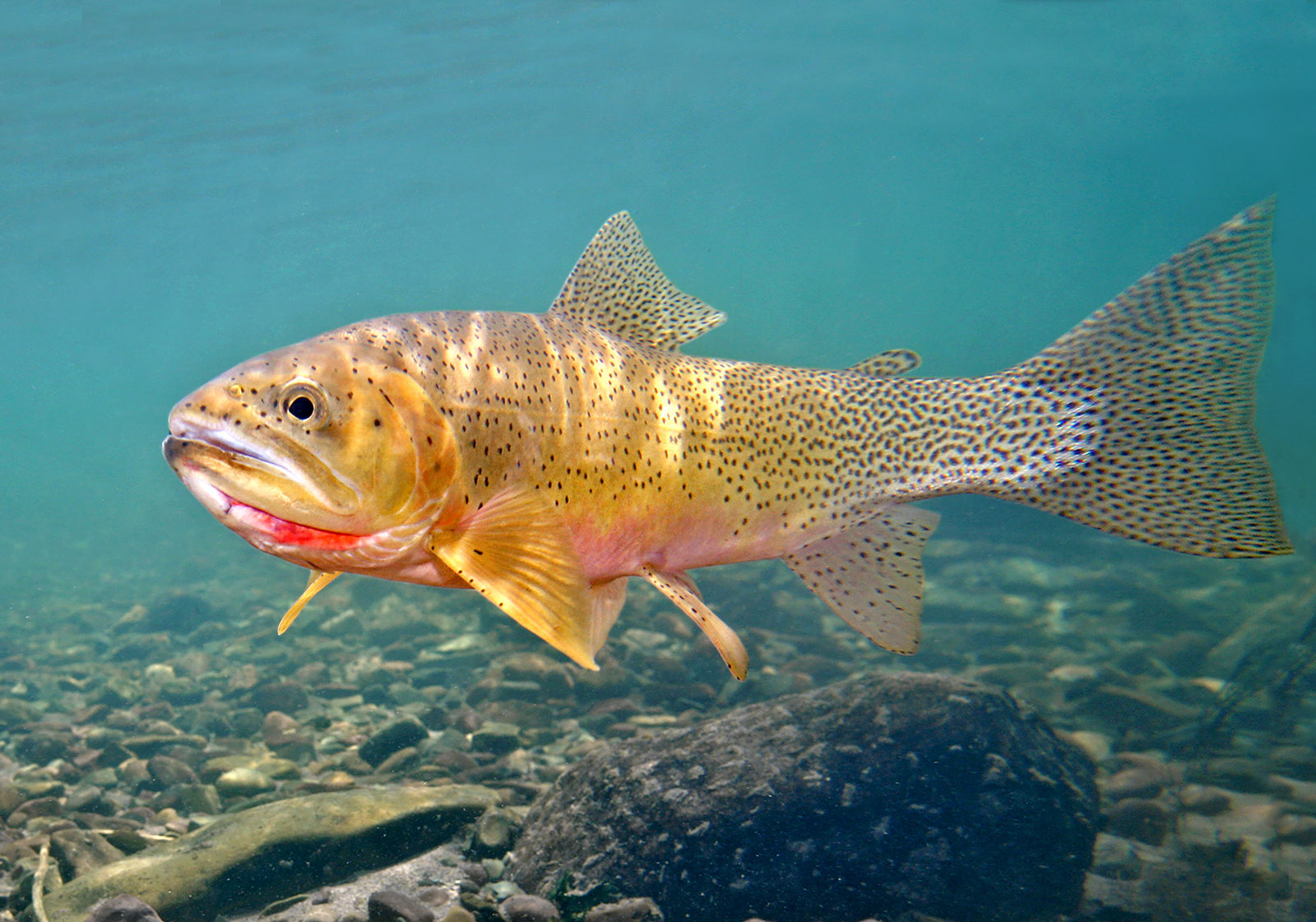
Like our native grayling and bull trout (which is actually a char), I consider cutthroats an indicator species. Their strict requirements for cold, clear water make them a proverbial canary in the coal mine warning us when habitat is starting to degrade. While development and deteriorating water quality are contributing to the decline of cutthroat populations around the state, we may have to look inward to identify the true culprits. Native cutthroats compete poorly with the introduced browns and rainbows that have made our state a famous fishery. Most dramatically, lake trout—which were illegally introduced to Yellowstone Lake sometime around 1990—eat the cutthroats that form the base of the food chain that sustains multiple species in the area, and intensive efforts to eliminate the introduced species have proven futile.
Cutthroat populations have declined substantially since historic highs, especially east of the Continental Divide. Their relative abundance farther west is likely due to greater contiguous habitat, which facilitates more genetic diversity than in smaller isolated waters farther east. Non-native trout are a major threat in both areas, and not just because they out-compete cutthroats for food. Rainbow trout hybridize readily with cutthroats to produce so-called “cuttbows,” further diluting native genetics. Both rainbows and hybrids tolerate warmer water conditions better than cutthroats, meaning that climate change will likely create even more problems for the natives over time.
Cutthroat populations have declined substantially since historic highs, especially east of the Continental Divide. Their relative abundance farther west is likely due to greater contiguous habitat, which facilitates more genetic diversity than in smaller isolated waters farther east.
Studies confirm that cutthroats do best in headwater streams isolated from the invasive trout below. Historically, this separation was maintained by natural barriers like waterfalls and beaver dams that have since been lost to development. Montana’s department of Fish, Wildlife & Parks (FWP) is currently working on projects aimed at restoring those physical separations by re-creating those natural barriers.
FWP is also working on a more complex program called “genetic rescue.” Lack of genetic diversity in isolated waters leads to inbreeding and associated loss of adaptivity, but it only takes a few fish with fresh genetics to reverse this process. Biologists are now transplanting small numbers of non-hybridized native cutthroats into isolated populations to reverse this process. Preliminary results are encouraging.
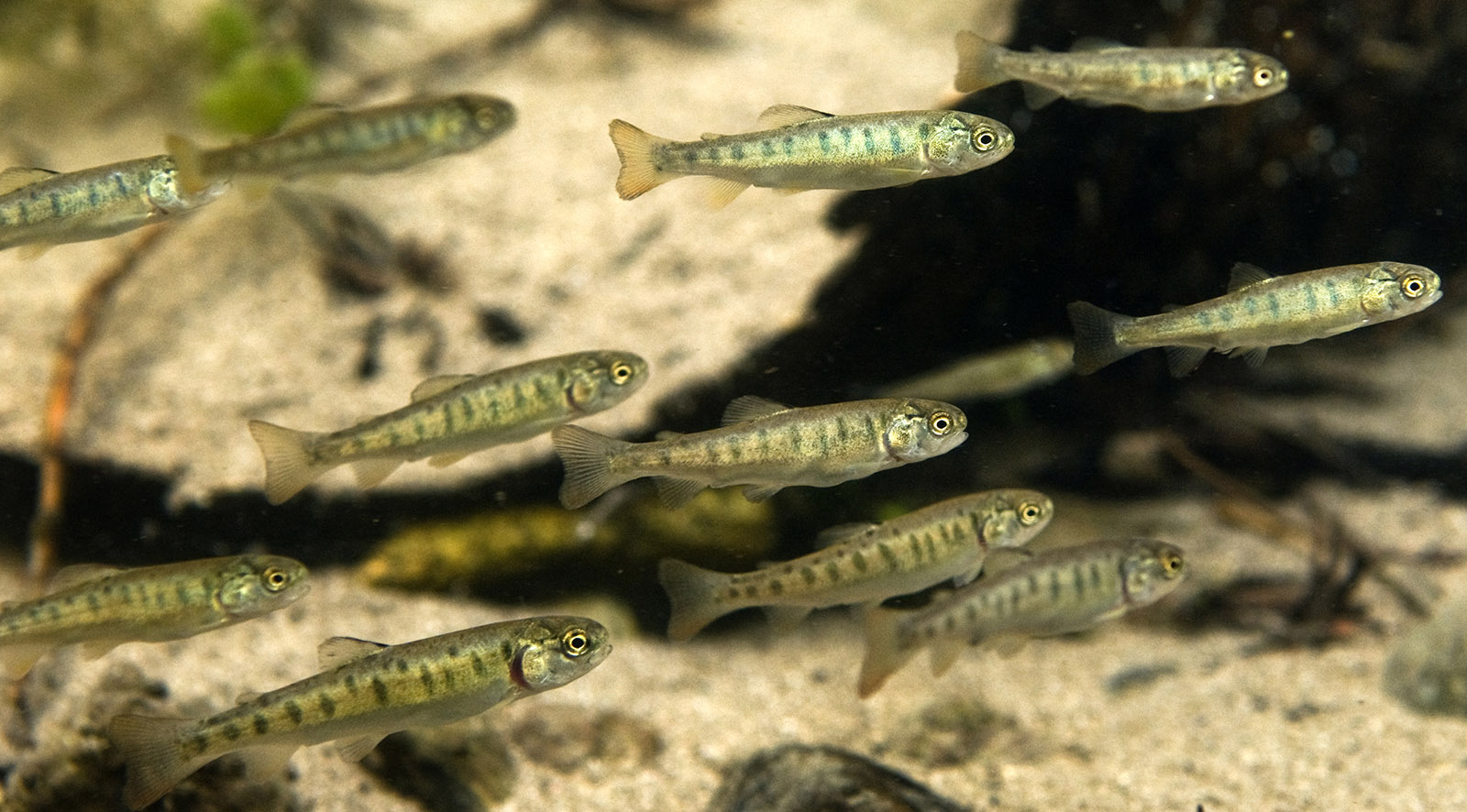
Montanans have always demonstrated a special regard for our cutthroat trout. On February 10, 1977, Governor Tom Judge made it official when he signed the bill that made the blackspotted cutthroat Montana’s state fish. Great minds evidently think alike, since six other western states have made the same choice. Most, like Montana, named a regionally important subspecies. Only the brook trout, which has received the same honor in eight states, has exceeded that record of official recognition.
My affection for the cutthroat has always been about more than the fish. I love the places where they live, which is why Lori and I have hiked these mountain miles to catch fish smaller that those in several streams we crossed on the drive from home.
Now, in these troubled times, it is more important than ever maintain and restore cutthroat habitat, and keep it the way it has always been.
Don Thomas has spent most of his adult life outdoors in Montana and Alaska. He writes regularly for many national publications, and has also been a physician, pilot, and hunting guide. He and his wife Lori now spend the bulk of their time at their home in Lewistown.
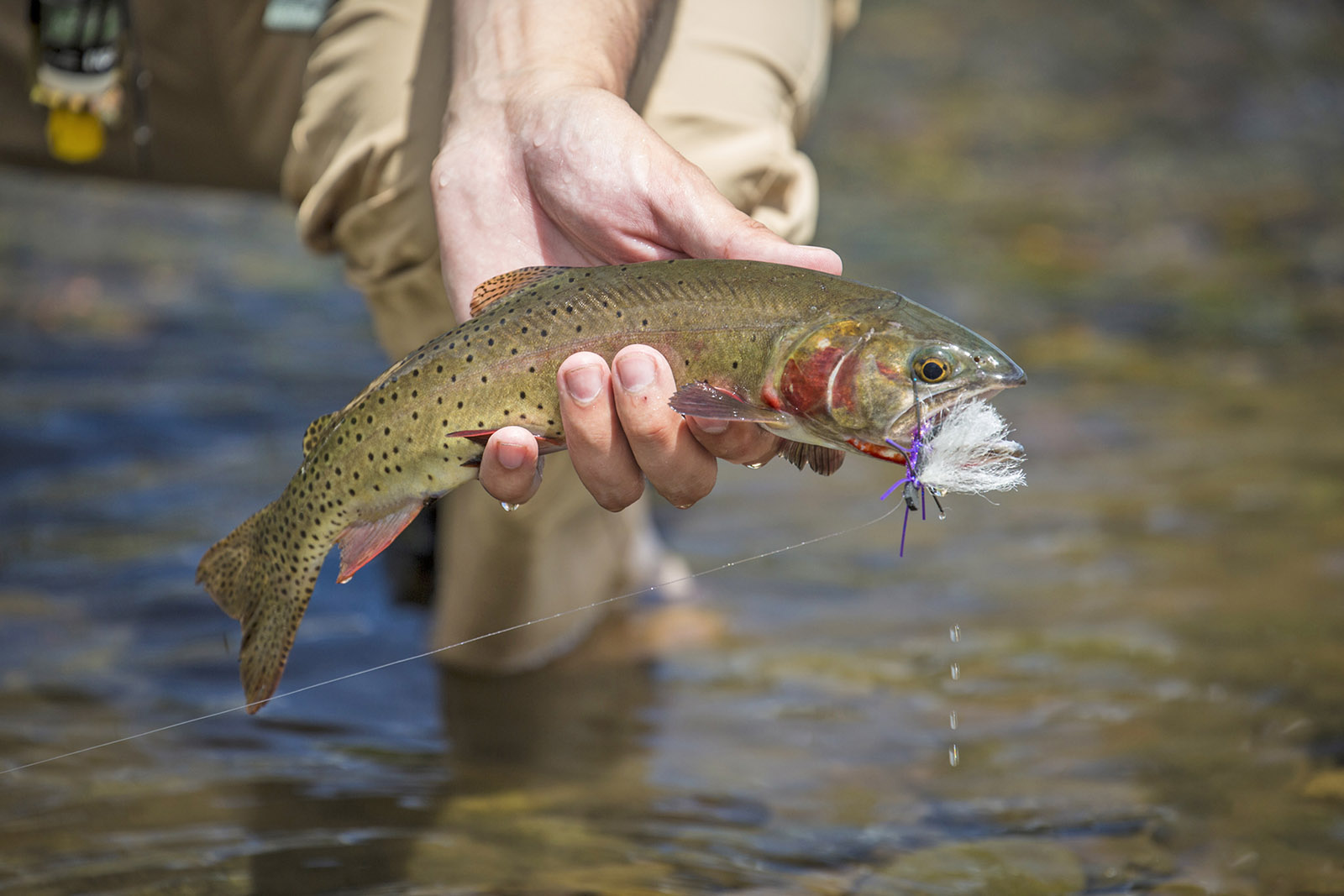
Cutting Your Teeth
by Don Thomas
Big fish like big water, and the Upper Yellowstone remains a great place to find big-bodied cutthroats. West of the Continental Divide, the Flathead drainage also produces nice fish. Despite conservation concerns, small, clear, headwater streams throughout the state still hold fishable populations of cutthroats. The farther you hike, the more fish you’ll find, although most of them will be small. East of the Continental Divide, suitable habitat is largely limited to streams draining from the region’s isolated “island” mountain ranges. It should go without saying that no matter where you find them, native cutthroats should be returned to the water using proper release technique.
